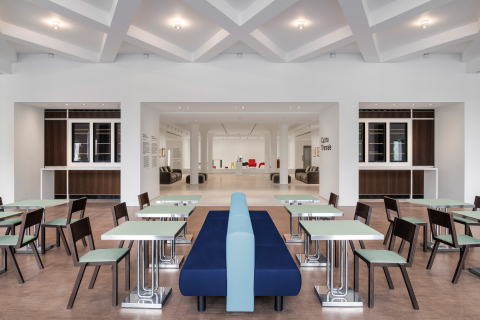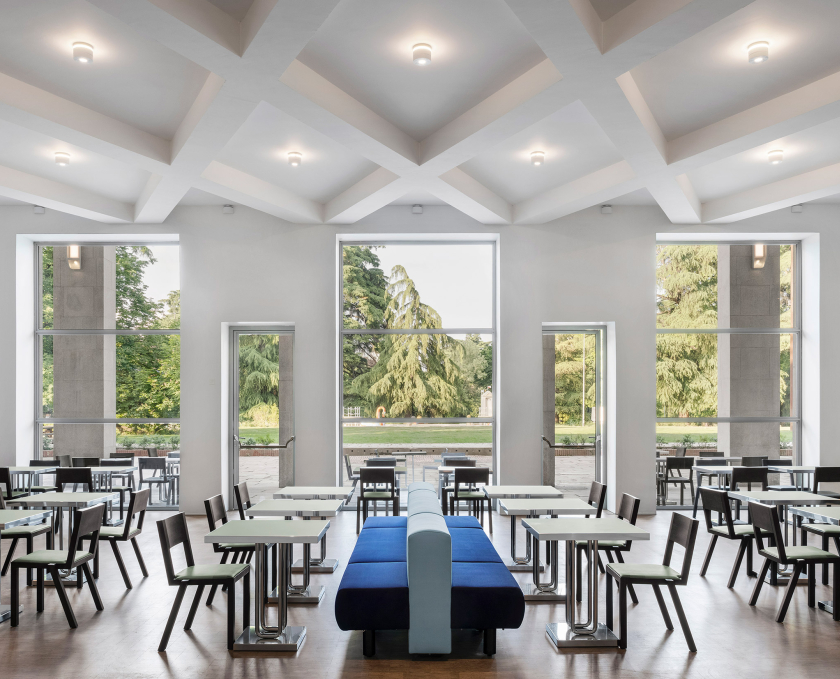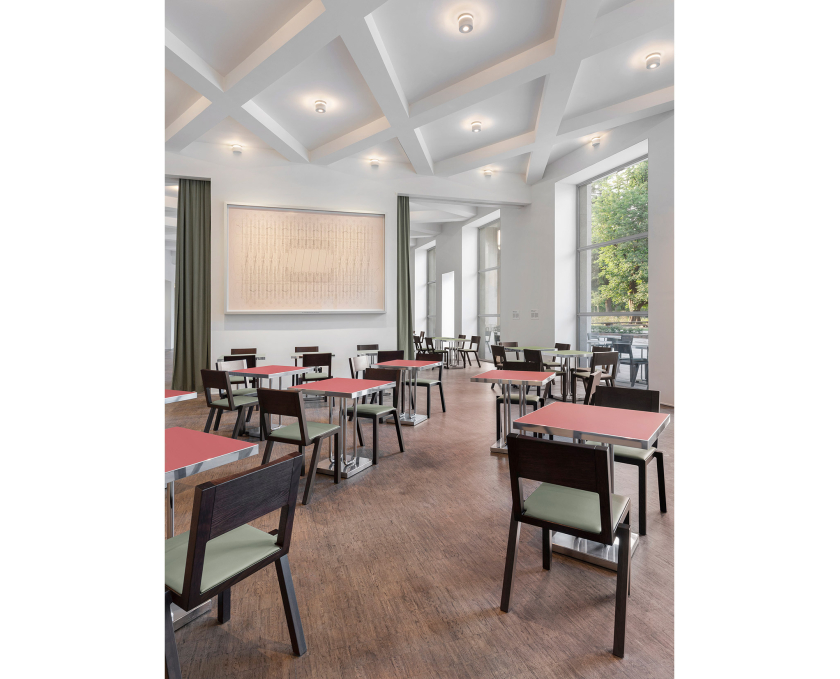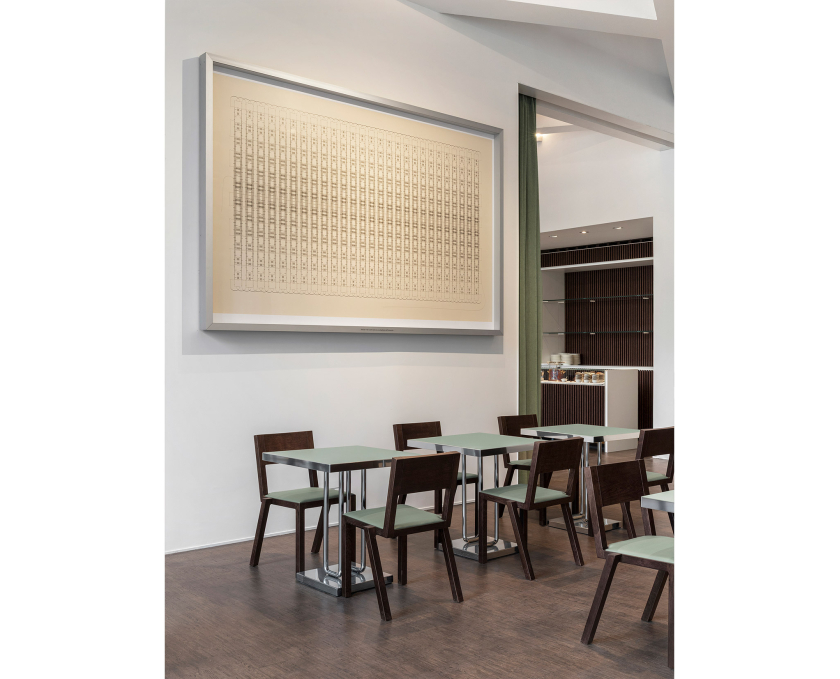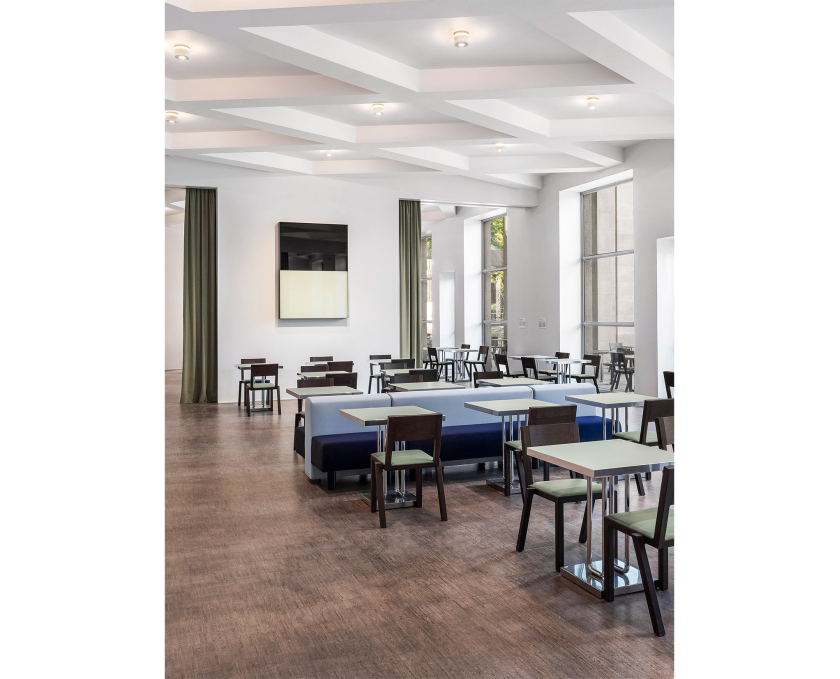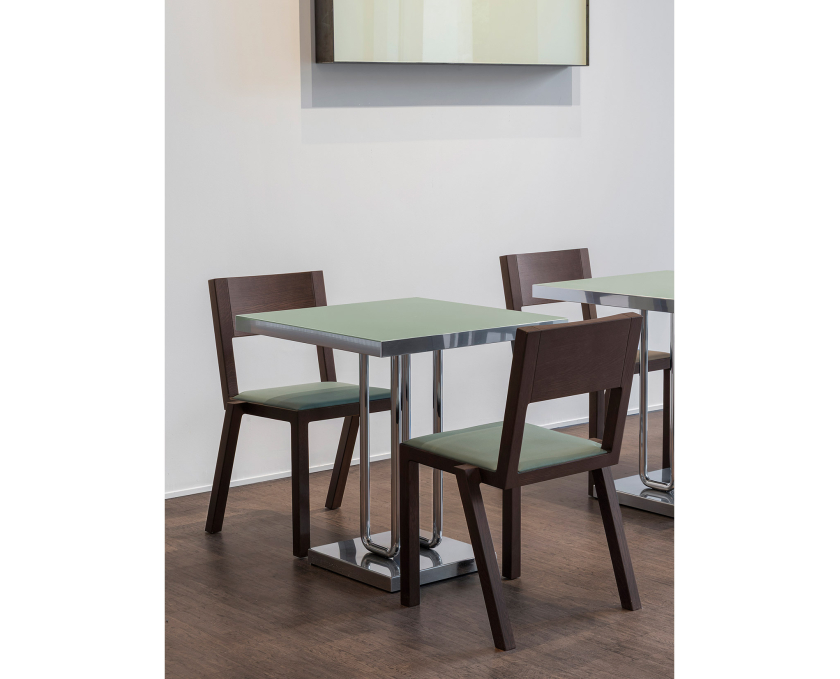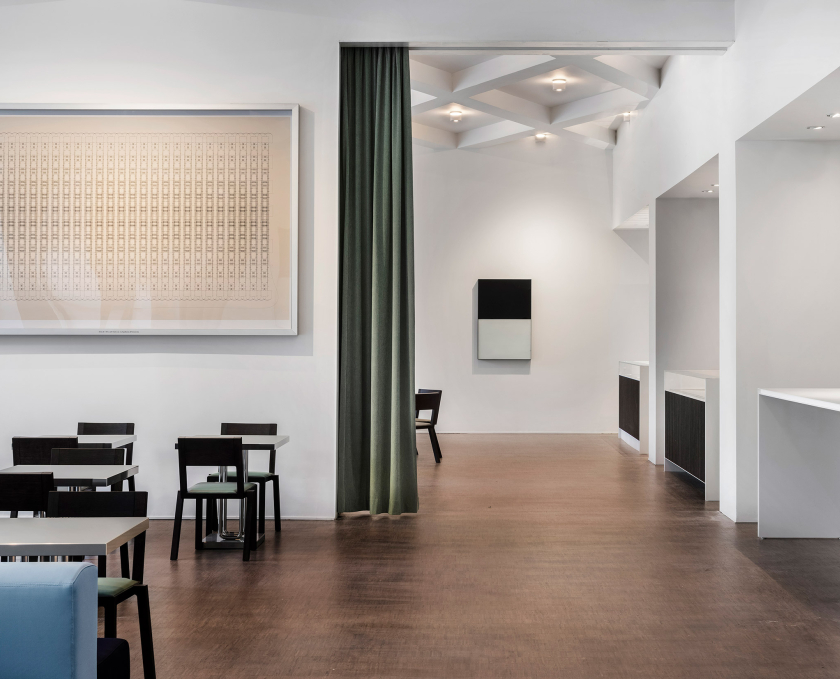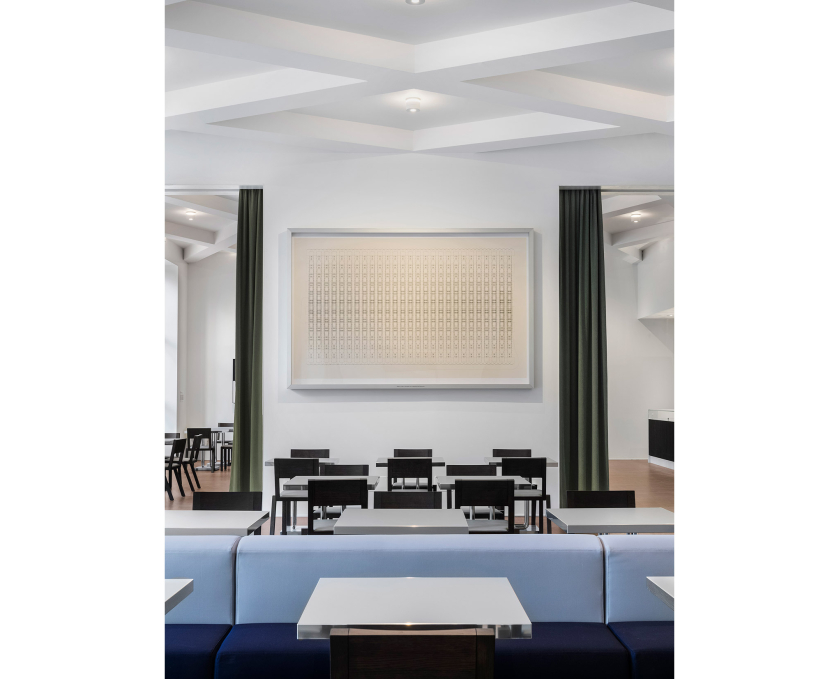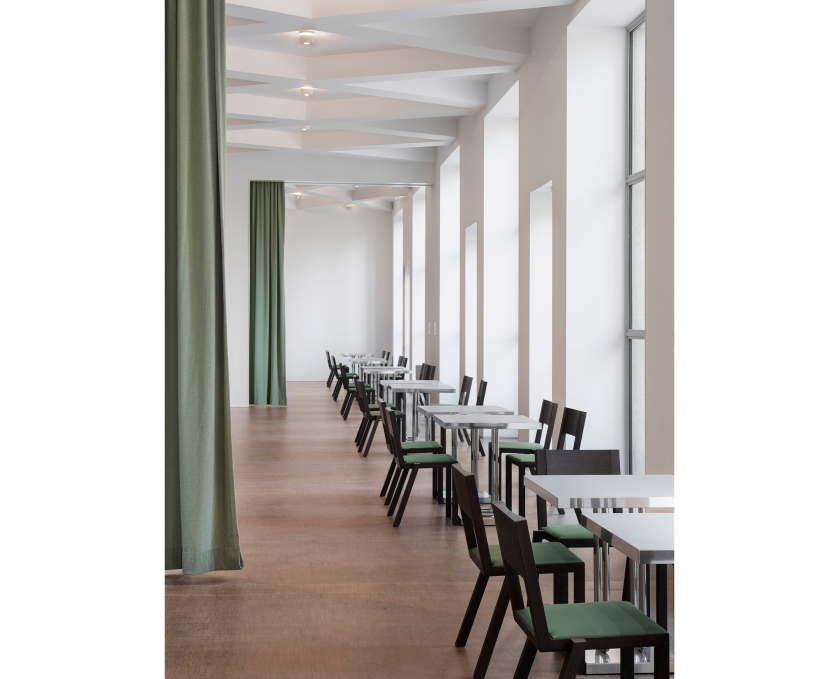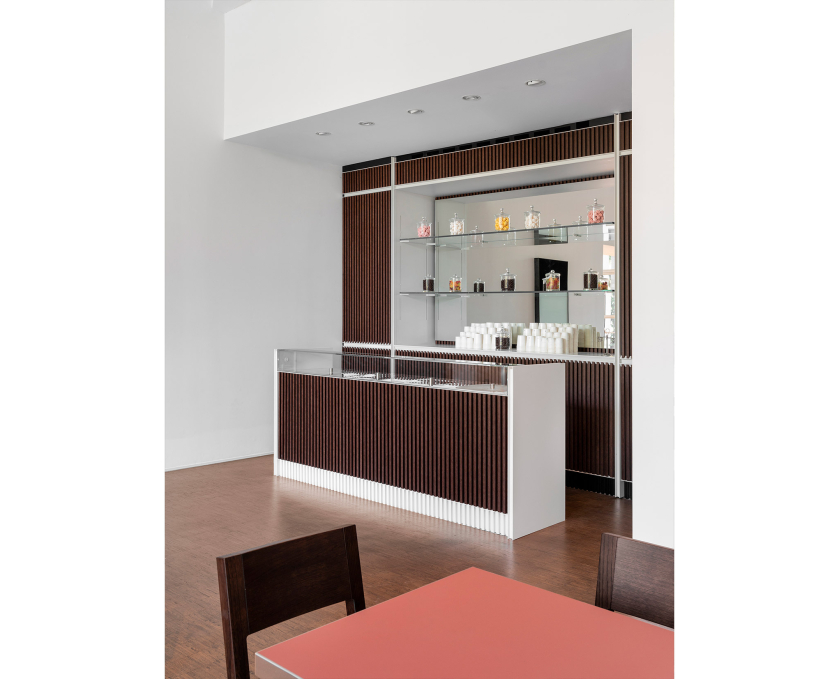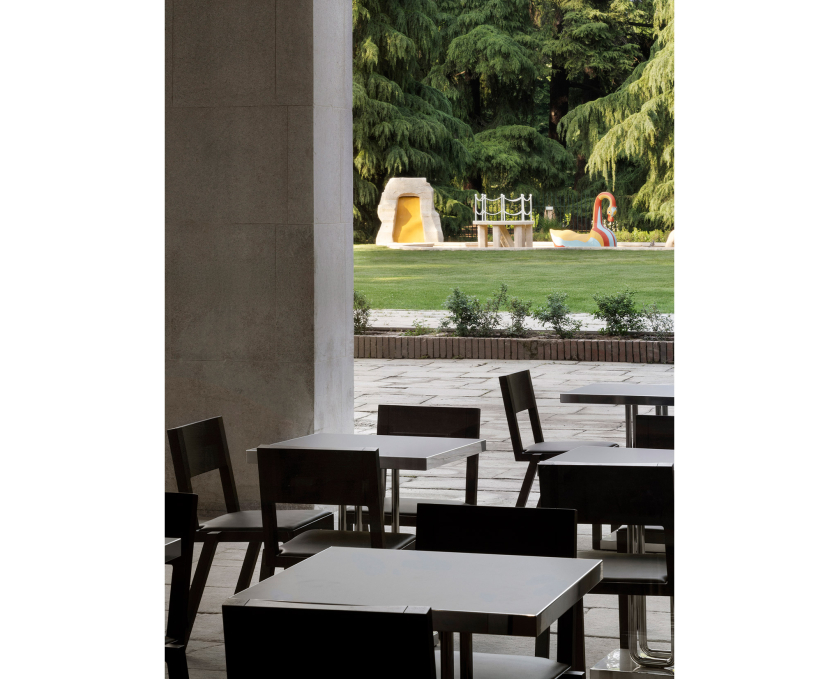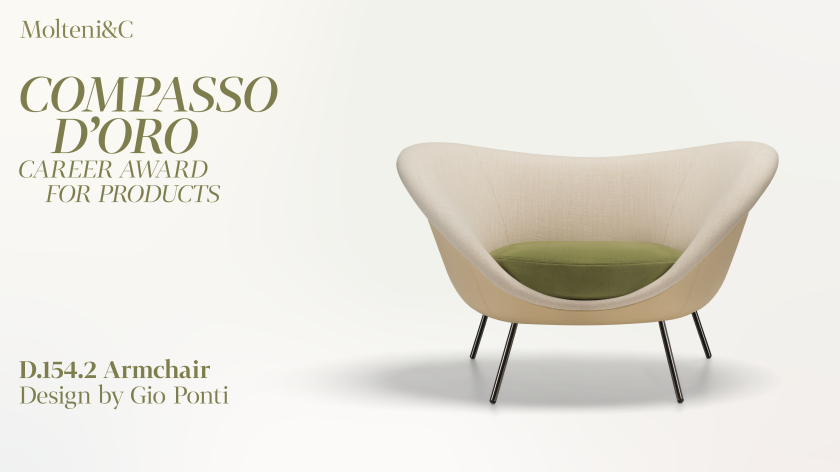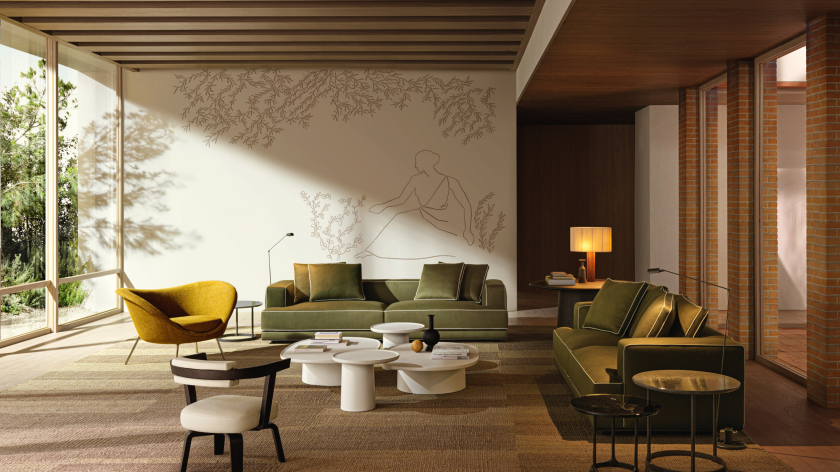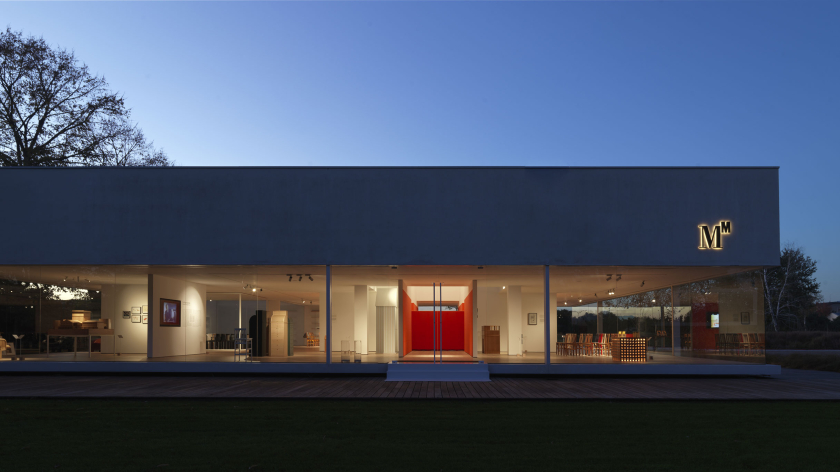A new seating design by Studio Klass, the Triennale Chair, offers a contemporary reinterpretation of the building’s historic furnishings. Stackable, wooden, and minimal in its silhouette, the chair stands out for its balance of solidity and refinement.
“With the Triennale Chair, we sought a balance between function, elegance and memory. An essential object built around the archetype of a chair, stripped of decorative gestures to focus on proportion, presence and quality. It is a chair designed for everyday use – to be stacked and used – yet intended to last over time and convey a discreet, recognisable identity.”
— Marco Maturo, Co-founder, Studio Klass
The fixed bespoke elements designed by Cipelletti include a large counter in slatted oak enhanced with four glass shelves and a door with an integrated mechanism. Each includes wardrobes, mirrors, shelving, and paneling that subtly reflect the surrounding garden and Giorgio de Chirico’s historic fountain, through the use of integrated mirrors and exposed structural frames.
“The six boiserie niches from Muzio’s original design have been reinterpreted in a contemporary, functional key. Slatted oak panels were used for the walls of the built-in furnishings to lighten their visual impact, diffuse the light, and enhance acoustics.”
— Luca Cipelletti, Founder of AR.CH.IT and Architectural Director of the Palazzo dell’Arte
Two oak-clad cloakrooms with lacquered pivot doors complete the space, designed for maximum functionality and harmony. PRINCIPLES sofas by OMA and a travertine-top table from LSM’s Andromeda collection round out the interior, each in seamless dialogue with the space and its purpose.
Cucina Triennale is the latest chapter in a long-standing partnership between UniFor and Triennale Milano, which began in the early 1990s. From the XVIII Triennale di Milano in 1992, featuring Aldo Rossi’s Parigi chairs, to recent exhibitions dedicated to iconic Italian designers, UniFor has continuously supported the cultural and architectural expression of the institution.
This latest intervention reaffirms UniFor’s ongoing commitment to shaping spaces that reflect both heritage and modernity — and Molteni Group’s broader vision of cultivating meaningful intersections between architecture, design, and culture.
Credits
Main Image: Cucina Triennale, photos by DSL Studio
Image 1: Cucina Triennale, photos by Delfino Sisto Legnani-DSL Studio; works of art courtesy of Galleria Massimo Minini and Studio Alberto Garutti
Image 2: Cucina Triennale, photos by DSL Studio
Image 3: Cucina Triennale, photos by Delfino Sisto Legnani-DSL Studio; works of art courtesy of Galleria Massimo Minini and Studio Alberto Garutti
Image 4: Cucina Triennale, photos by Delfino Sisto Legnani-DSL Studio; works of art courtesy of Galleria Massimo Minini and Studio Alberto Garutti
Image 5: Cucina Triennale, photos by Delfino Sisto Legnani-DSL Studio; works of art courtesy of Galleria Massimo Minini and Studio Alberto Garutti
Image 6: Cucina Triennale, photos by Delfino Sisto Legnani-DSL Studio; works of art courtesy of Galleria Massimo Minini and Studio Alberto Garutti
Image 7: Cucina Triennale, photos by Delfino Sisto Legnani-DSL Studio; works of art courtesy of Galleria Massimo Minini and Studio Alberto Garutti
Image 8: Cucina Triennale, photos by Delfino Sisto Legnani-DSL Studio; works of art courtesy of Galleria Massimo Minini and Studio Alberto Garutti
Image 8: Cucina Triennale, photos by Delfino Sisto Legnani-DSL Studio
Image 9: Cucina Triennale, photos by Delfino Sisto Legnani-DSL Studio
Image 10: Cucina Triennale, photos by Delfino Sisto Legnani-DSL Studio

